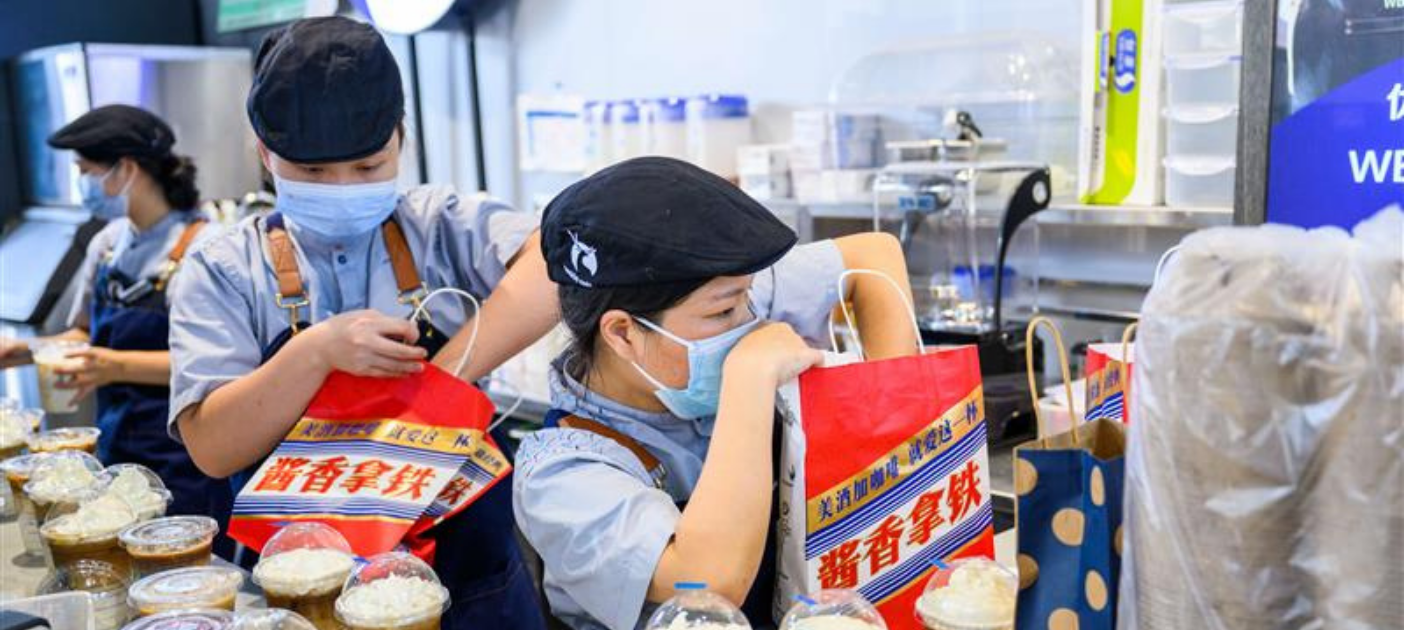Homegrown brands have found the secret for success in China
Bastavee Barooah
Head of Food and Agribusiness, Institutional Banking Group

From Haidilao and Luckin Coffee to Mixue and Jiumaojiu, homegrown food and beverage (F&B) players are making waves in China’s dynamic and hyper-competitive restaurant and retail beverage sectors, and are claiming more and more market share from well-known international brands.
In recent years, intensifying competition and changing consumer preferences have made this a challenging landscape for established businesses, but some fast-food and retail beverage players seem to have found a winning formula.
To understand what exactly those ingredients are—and how to identify which companies have the right mix—DBS Bank undertook a cross-sector analysis to understand what makes China’s food service sector tick.
The power of digital
Unsurprisingly our analysis found that a strong digital footprint is the main differentiator of success in China’s F&B sector. Chinese consumers are known to be highly tech-savvy, and these platforms enable many F&B businesses to expand market reach and meet consumers’ demand for digitally-connected food service experiences.
In DBS’ November 2024 China consumer surveys, e-commerce platforms were the second most-preferred channel for F&B consumption especially in first-tier cities, with most respondents expecting to spend more in this segment over the next 12 months.[1]
F&B businesses with strong digital capabilities also tend to be more efficient and capable of translating those efficacies into better margins and store-level efficiencies. We see this in leading companies in the restaurant and retail beverage industry that have implemented sophisticated ordering systems and delivery platforms.
Some of them have also embraced self-service kiosks for quicker transactions and reduced wait times, as well as digital menus and smart kitchen technologies to streamline food preparation and improve cost control and operating efficiency. With more data available on daily consumption patterns, businesses are also able to leverage data analytics to optimise inventory management and personalise marketing strategies.
Another key digitalisation trend in China’s F&B sector are players’ embracing new marketing strategies ranging from viral marketing stunts on social media platform Douyin to livestreaming product sales.[2] Players are also increasingly utilising influencer marketing to drive product launches and brand awareness. Retail beverage player Chagee, for example, featured a number of influencers—ranging from famous actors to outdoor enthusiasts—in the launch of its Long Jing series in 2023.[3]
The price is right
A key factor that has helped give top Chinese F&B brands a competitive edge is their incredible capability to adapt to consumers’ price sensitivity. Chinese consumers are increasingly prioritising value-for-money purchases, and many are considering cutting their spending on dining out over the next 12 months, as noted by our consumer surveys.[4]
In recognition of these changing winds, food service players are increasingly adapting their pricing strategies to capture cost-conscious customers and sustain resilience. This is especially true of fast-food chains such as YUM China, McDonald’s China and Café de Coral, where the average price of meal sets ranges from RMB30 to RMB40 (US$4.13-US$5.5).[5] In the retail beverage sector, market leader Mixue’s products are on average priced below RMB10 (US$1.38), making it a favoured choice for many.[6]
Of course, consumers occasionally do want to splurge for special occasions, which is why some food service players are opting to position themselves as higher-end customer-centric restaurants, such as hotpot leader Haidilao.[7] This helps illustrate how businesses that can quickly and accurately set prices are more able to navigate this period of transition for the sector and stay resilient in the face of headwinds.
Size and scalability matter
Our analyses also show that, in China, bigger really does mean better.
Restaurant and retail beverage players with larger operating scale—including self-operated outlets and franchises—tend to perform better against rivals. As leading players like YUM China and Mixue demonstrate, being highly visible and accessible to customers drives more engagement, higher market penetration and sales.
The scale of their operations also plays a significant role in determining how competitive a company can be. Players with significant vertical integration—from procurement to delivery—tend to have much more control over the quality of their products as well as more bargaining power to manage costs.
One thing to look out for is how businesses are expanding. While self-operated stores offer brands a significant amount of control over product quality, franchises are a great way for companies to grow rapidly with minimal capex while still taking advantage of the benefits of greater brand visibility. Mixue offers a great example of this model, given the relatively low cost of the company’s franchise which has enabled its rapid global expansion over a short period of time.[8]
Where are China’s F&B opportunities?
China’s food service sector has ample room to grow, but the broad and varied nature of the ecosystem can make it difficult to know where to look. Based on our analysis, we see significant opportunities in segments
Freshly-made beverages. Despite high competition, this market is expected to deliver RMB1.2 billion (US$166.2 million) in sales by 2028 thanks to growing per capita disposable income, evolving consumer habits and product innovation. Currently, China’s per capita consumption of freshly-made beverages is 22 cups—in comparison, Japan and the US’s customers have a per capita consumption of 172 and 323 cups, respectively, suggesting there is ample room for further expansion of the segment.[9]
Fast-food. There’s much room for key operators to expand their store networks. For example, in 2024, there were roughly more than 12 KFC stores per million people in the US, while China’s populations only had 8 per million people. McDonald’s, in comparison, has more than 40 stores per million people in the US, versus the mere 4 per million in China. These penetration rates reflect the significant opportunities for players to expand further.[10]
Overall, fast food chains are expected to outperform full-service restaurants, but both sectors have significant potential, especially as food service is projected to grow into a US$939.3 billion industry in China by 2029.[11] Competitive pressures in the sector will remain challenging this year, but we expect large players with strong scalability, competent digital adoption and mass-market positioning to continue to stand out and ride on decent industry growth over the medium-term.
China’s food service sector is poised for continued growth, particularly given a still untapped customer base, especially value-conscious customers in China’s lower-tier cities. DBS Bank’s Food & Agribusiness Industry Team is committed to helping clients navigate these opportunities. We bring deep industry knowledge, a strong understanding of the market and expansive networks to tailor our solutions to what our clients need, not just for now, but for the future.
Contact us to find out more
[1] https://www.dbs.com.sg/corporate/pdf/2024-HK-China-Consumer-Survey.pdf
[2] https://techbuzzchina.substack.com/p/food-fight-douyins-local-services?open=false#%C2%A7chapter-douyins-history-in-local-services
[3] https://sevenvault.com/2023/11/30/chagee-long-jing-series-campaign/
[4] https://www.dbs.com.sg/corporate/pdf/2024-HK-China-Consumer-Survey.pdf
[5] https://www.dbs.com/content/article/pdf/AIO/022025/250225_insights_restaurants_and_retail_beverage_sector_striving_for_scale_and_value.pdf
[6] https://e.vnexpress.net/news/business/companies/how-mixue-climbed-to-top-of-china-s-bubble-tea-market-with-1-drinks-4829706.html
[7] https://www1.hkexnews.hk/listedco/listconews/sehk/2024/0827/2024082701222.pdf
[8] https://foodinstitute.com/focus/mixue-and-matcha-asian-beverages-take-over-the-world/
[9] https://www1.hkexnews.hk/listedco/listconews/sehk/2025/0212/11535834/sehk24121500143.pdf
[10] https://www.dbs.com/content/article/pdf/AIO/022025/250225_insights_restaurants_and_retail_beverage_sector_striving_for_scale_and_value.pdf
[11] https://www.businesswire.com/news/home/20240401450280/en/China-Restaurant-Market-Analysis-2024-A-US%24939.32-Billion-Market-by-2029-with-Compound-Annual-Growth-of-7-Forecast-During-2024-2029---ResearchAndMarkets.com


